The dollar is weakening, its grip as a reserve currency eroding. The backing of the dollar, the ‘mighty’ US military is showing signs of weakness. Our foreign policy decisions have further isolated America yet there is little sign they will change. The various pieces below make up what I see as the foundation of American power (Money, Manufacturing, Weapons, People and Mission). If in isolation, one of these had issues the threat might be less, with all showing weakness they compound and drastically reduce our global influence and capabilities.
Money
“Government having access to a printing press [for money] allows it to continue fighting until it completely destroys the value of its currency and not just until it runs out of money” — Saifedean Ammous, The Bitcoin Standard
Inflation
On December 23, 1913, America’s worst President Woodrow Wilson signed the Federal Reserve Act starting the decline of American monetary power. In short this gave the Fed the ability to print money. The damaging effects can be immediately seen in the below ‘purchasing power’ chart below from the Federal Reserve Economic Data below[1]. Purchasing power is about 3% of what it was before the Federal Reserve Act. When looking at the price of an ounce of gold, in 1913 it cost $18.92, today it is $2051.77[2].
“Inflation is by design”, sure it is to a degree. This doesn’t mean it robs the middle class any less but it has become abundantly clear that, people in power don’t care and that the people not in power understand too little of it to care. What IS of importance, or at least should be, to the people in power is the US dollar status as the reserve currency.
Reserve Currency
The US has been the ‘reserve currency’ of the world since the Bretton-Woods Agreement. In short, the US held gold and “maintained” a conversion rate of $35 per ounce of gold. Foreign currencies would peg their currency to the dollar. This farce continued until 1971 when Nixon officially ended the convertibility of the dollar to gold. Shortly thereafter the US came to an agreement with Saudi Arabia creating the Petro-Dollar. The Saudis would only trade their oil for dollars. In 1971 a barrel of oil was $3.17, today its trading at $78[3]. The Saudis have done seemingly well, despite our inflationary policies, the US has been THE World’s Superpower so that i suppose has kept the Saudis amicable to this arrangement. But will this last?
If we think of a foreign reserve as a ‘rainy day fund’ for nations then the stability and usability of that rainy day fund, no matter the circumstances is VITAL to its value. In February of 2022, following Russia’s invasion of Ukraine the United States led sanctions against russia which froze about $300 billion worth of reserves[4]. The US also led the effort to ban Russia from SWIFT, essentially a payment and communications mechanism for banks[5].
There were 2 messages in our response to Russia’s invasion. First was, if you ‘get out of line’ then your reserves will be worthless. The second unintended message was that we do not have as much control and power as we had assumed. European countries still rely on Russian gas and a report from June 2023 showed that many countries are circumventing export bans amounting to $8.5 billion [6]. The other non-monetary consequences will be discussed below.
US National Debt
The United States Federal debt is completely out of control. WE have more that $34 TRILLION in debt. It was 391 billion in 1971.
Interest on our debt was the 4th largest item in the federal expenditures behind Social Security, Medicare and the military [7]. It will soon surpass even our military spending. Some will argue that this level of debt is still ‘manageable’ that it is ‘ok’. We have to assess not just the ability to continue these massive payments but also the willingness of the world to take on our debt-risk. The risk is not only ‘failure to pay’ but the methods of how we may decide to pay, one option, one used historically by indebted nations, is to print money, to increase inflation and devalue the currency in order to ‘lesson’ the burden of debt. That risk does not bode well for the dollar as a reserve currency.
Manufacturing
“Powerful enemies must be out-fought and out-produced… It is not enough to turn out just a few more planes, a few more tanks, a few more guns, a few more ships than can be turned out by our enemies… We must out-produce them overwhelmingly, so that there can be no question of our ability to provide a crushing superiority of equipment in any theatre of the world war” — FDR
The industrial response to Pearl Harbor was nothing short of amazing. The entire nation became a war manufacturing powerhouse. During the war the US built 2/3 of the Allied military equipment 297,000 aircraft, 193,000 artillery pieces, 86,000 tanks, 2 million trucks and 17 Aircraft carriers (compared to Japans 6) [8].
We can see in the below World Bank Data[9] that the US was surpassed by China in 2008 as the world’s leading manufacturer, China now accounts for ~2x as much as the US. The other countries listed are relatively small but where US manufacturing has remained flat, all but South Africa have grown in size. China & Saudi Arabia led the group in manufacturing growth.
The first, most visible cracks in our manufacturing arose (at least to me) when COVID hit. Suddenly Americans became painfully aware of how little we produce in this country. Masks, medicine, medical equipment even toilet paper were hard to come by at times. Supply chains for 75% of US companies were impacted by COVID[10]. US share of chip manufacturing had declined from 37% in 1990 to just 12% in 2020[4]. However, its share of the most advanced chip manufacturing (<10nm) is currently 0% according to McKinsey [11].
Defense Manufacturing
“The U.S. defense industrial base is not adequately prepared for the international security environment that now exists.” - Seth Jones, Center for strategic & International Studies
The war in Ukraine exposed additional flaws in our manufacturing, these tied directly to defense. We can see below that it will takes several YEARS for us to rebuild our stockpiles[12]. This reflected earlier difficulties that were experienced during the battle of Mosul: “In Mosul the coalition’s high and frequent use of precision-guided munitions severely and dangerously reduced the United States’ strategic stockpile.” [13]. Another CSIS report, states that in war games related to an invasion of Taiwan, the US runs out of munitions in LESS THAN A WEEK[14]. A bit of a preview for the next segment, the US can ‘boost production’ to up to 33 armored vehicles a month, 45% of the staff is working on tanks[15], maybe 15 tanks a month? 180 a year. We have gone from ‘speak softly and carry a big stick’, to ‘scream maniacally while swinging a twig’.
Weaponry
American military strength is often thought of in three primary ‘metrics’ tanks, carriers and the sheer volume of money. We have advanced tanks and by a large margin, the most capable aircraft carrier. 30 years ago this combination seemed unstoppable. Today both platforms have vulnerabilities that negatively impact their combat effectiveness and thus their ability to act as a deterrence. The final metric, money, is more a testament to our waste than it is to our strength.
Tanks
“We have sufficient evidence to conclude that this capability [tanks], despite its long and honorable history in the wars of the past, is operationally unsuitable for our highest-priority challenges in the future,” — USMC report on divesting from tanks
Tanks first arrived in battle during WW1 and have had an important role in war since then. They are seen as a foundational part of a nation’s military and a ‘symbol of national power’ [16]. When thinking of 'post WW2’ national militaries, I remember thinking of the sheer number of tanks available to the soviet union as a symbol of its military capabilities. When we invaded Iraq I recall hearing of the armored battles that kicked off the war. While this Army university article cites the ‘continued relevance’ of the tank it uses examples of war pre-2005, the latest being the battle of Fallujah. Much of the article cites the ‘deterrence’ offered by tanks and the aforementioned symbol of power. The USMC report cited above stated that forces which could continue to operate in the weapons engagement zone (WEZ) were more ‘operationally relevant’ than forces that would have to maneuver out to survive[17].
Make no mistake that tanks ARE still formidable weapons just not AS formidable and they cannot win wars alone. The article above points out that tanks are to be used as COMBINED ARMS weapons, meaning in addition to infantry, not as stand alone weapons. While armor’s stand alone vulnerability has been known in the past, I believe it has been amplified by modern technology and fighting environments. The Marine Corps Times cited that the Libyan national army gains an advantage via Chinese made drones that have a 2,000km range and precision missiles[18]. It also cited Turkish military operations video in which armor was taken out from range using drones, artillery, and aircraft. In Ukraine, Russia had reportedly lost about 40% of its entire tank fleet a year into the war[19]. The Ukrainians had significant backing from NATO but the troops on the ground were still likely largely untrained due to the scale of the war losses. Despite this, there are many videos of drone-dropped munitions taking out tanks. In Gaza we see video after video of tanks and other armored vehicles (operating without infantry mostly) being damaged or destroyed in a variety of ways, from drone dropped munitions, multi-stage ambushes or RPG-shoot and scoots. This not only highlights the need for combined arms but also the need for tanks to ‘maneuver out to survive’. I would argue that the field of operations for tanks has narrowed considerably and thus the ‘strength’ projected, both in image and in reality, has been severely limited.
Carriers
Debate has begun, at least within the past 15 years if the carrier is still a viable platform. This comes as the $13 billion Ford Class carriers enter service. They are planned to have a ‘50 year’ service life. Despite this huge investment, the viability of the platform is in question. Commander Angus Ross (Royal Navy- Ret) believes that “Instead of being the centerpiece, it will become an important but more narrowly focused role player”[20]. Others are seem less optimistic.
In ‘At what cost a Carrier’ by Capt Henry J. Hendrix, articulates the many issues of a carrier focused Navy. In short, they are expensive and increasingly vulnerable, much like the tank mentioned above. The flaws were highlighted upon the development of Chinese DF-21 missile which has ~1000 mile range vs the 690 mile range of an F-35. One argument in support of carriers cited the ‘refueling’ of fighters to ‘double’ their range[21]. Unfortunately, the Chinese J-20 has a combat range of 1000-1200 miles, meaning any refueling efforts would be taking place within strike distance[22].
That is worst case scenario, war with China. Most missions (which we will dive into below) are in the middle east striking targets on land with little to no air defenses. How does it fair there? Well, expensive. In addition to the upfront costs, it costs an estimated “$6.5 million per day to operate a strike group”[23]. In terms of ‘show of force’ Hendrix details the reduced costs that associated with other platforms filling the role. Flying planes and training pilots is also incredibly expensive. Based on figures in the years leading up to 2013 when the article was written, it “works out to $7.5 million per bomb” dropped vs ~$2 million of a tomahawk missile.
Hendrix highlights that the real problem with carriers is survivability. I touched on the ‘peer’ threat above but it should also be noted this was written in 2013 and still cited “swarming small craft” as a risk. I don’t know if that was intended to mean drone strikes but I think the author would probably agree. Ukraine highlighted the effectiveness of drones against tanks AND drones against ships. We can watch a video of their use here which details the use of ‘sea baby’ to partially sink a Russian ship. The reported range is over 500 miles. They cost a mere $250,000 to produce[24]. Their are also reportedly submersible versions in production now as well[25] .
What are carriers best at then? It seems creating jobs may be their ‘primary function’. Though only built in one Virginia shipyard, the “supply chain consists 2,450 companies in 48 states and 364 congressional districts, employing 13,100 people along the way. And the Newport News shipyard alone employs 25,000 more.”[26]
People
Recruitment
Surprising no one, a 2022 US army study found that “young people don’t want to die or get injured, deal with the stress of the army or put their lives on hold”[27]. Across the military the US missed its recruiting goals by 41,000. The DOD article cites among other things, a ‘low trust in institutions’, ‘more [career] options’, ‘fewer family members who served’ and a ‘smaller eligible population’ among other things [28]. What does that mean? In 2020 it was found that only 23% of those 17-24 were even eligible. 44% had more than one disqualifying reason, 11% were only overweight, 8% due to drug use, 7% due to medical/physical only and 4% due to mental health issues[29]. I mentioned above the ‘deterrence’ capabilities of our weapons above, perhaps as a measure of global ‘belief’ in that system, Americans have the lowest confidence in the military in 26 years[30].
Some may look to the draft as a solution in the future but I cannot emphasize enough the different levels of discipline and skill I have seen between an all volunteer force of professional US military and conscripts in Russia, Ukraine and to my surprise Israel (yes even i believed the ‘hype’). The fact that the IDF STILL operates tanks without infantry should be all the evidence you need. Conscripts fight like conscripts and the trade off for America will be a huge net negative.
Politicians
It is hard to have have confidence in our politicians when they seem most focused on re-election and looting the American tax payer. Last year 90 year old Dianne Feinstein died in office, does anyone actually believe she was serving the people in the years leading up to her death? Roughly half of congress (house & senate) are over the age of 60, 20% are over the age of 70 [31]. Are these the people with the best interest of Americans at heart? It seems highly unlikely, some have had apparently “not” strokes on live TV. Many in congress have wealth far beyond the typical American with the median wealth over $1million. Several are worth over $100 million [32]. The top 20 ‘net worth gainers’ in 2014 had an average increase of 422% per year[33]. Can an 80 year old, $100 millionaire understand what is best for America? I doubt it.
Partisanship
62% of republicans and 54% of Democrats have ‘very unfavorable’ views of members of the other party[34]. 27% of Americans have unfavorable views of both parties and nearly half of all Americans age 18-49 ‘often wish’ there were more political parties[34]. I think most (at least 18-49 year olds) would agree that partisanship helps ensure we get worse political candidates than we need. The declining quality of politicians decreases the likelihood that America will adapt to changing geopolitical landscapes.
Mission
“War is a racket. It always has been. It is possibly the oldest, easily the most profitable, surely the most vicious. It is the only one international in scope. It is the only one in which the profits are reckoned in dollars and the losses in lives.”— Brigadier General Smedley Butler, USMC, War is a Racket
What are we fighting for? Freedom? No that lie got us into one war. Our rights? We sacrificed more rights following 9/11 than perhaps any other period in our history. Justice? No, we often support dictators, in fact today we are bombing Yemen for their military opposition to Israel’s ongoing genocide against Palestinians. Oil? Maybe, but we hit records in our production and lead the world today. The end of the day it is the racket that leads us to war, time and time again. Sometimes with some logical backing, though often, too often, lies and deceit led us to war. Scott Horton lists out the examples through ~2015[35].
War is STILL a Racket
"War is a racket. It always has been. It is possibly the oldest, easily the most profitable, surely the most vicious. It is the only one international in scope. It is the only one in which the profits are reckoned in dollars and the losses in lives."
Unwinnable Wars
I often describe our military as one highly capable of winning battles but completely inept at winning wars. Part of it ties back to the mission.
We invaded Afghanistan following 9/11 with intent of destroying Al-Qaida and killing Osama Bin Laden. We spent $2.3 trillion on this war and over 243,000 people were killed [36]. The Taliban now has an air force , armored vehicles and tons of munitions[37].
We spent roughly $3 trillion on our invasion of Iraq[38], this includes the follow on create/fund & destroy loop with ISIS, which eventually, supposedly ended 2 years after a bill was introduced.[39]. In total, 550,000 to 580,000 people were killed (so far). Biden requested $397 million this year to continue this fight [40].
In 2022, Russia invaded Ukraine. The US has sent over $75 billion in aid to Ukraine (the EU sent another $84 billion)[41]. I showed above the impact it has had on our stockpiles. Our government set out to ‘bleed’ Russia with Western arms and Ukrainian lives. The total deaths are not yet known though it is estimated over 500,000 [42]. The outcome however seems bleak. Despite our efforts the ‘land bridge’ to Crimea is under Russian Control.
Following a Hamas attack in October of last year (resulting from decades of oppression), Israel began a brutal genocidal campaign [43]. America has been shifting our focus off of Ukraine now to support this effort, depleting our resources even further. While the world supported Ukraine’s defense against Russia, the world is against Israel’s genocide of Palestinians. Tens of thousands of civilians have been killed thus far, last I calculated on day 81, 28% were men, 30% women and 42% children[44]. If we use the battle of Mosul as a model for the battle happening alongside Israel’s genocide, then we see that it is highly unlikely that Israel can actually achieve its military goals. In Mosul there was a ratio between 8 and 33 coalition fighters to 1 ‘enemy fighter’. Hamas’ 40,000 fighters would indicate a required force between 320,000 and 1.3 million. Far beyond the capabilities of Israel and not factoring in other regional actors.
As a final emphasis on our depravity, Yemen began attacking ships headed for israel. A Yemeni military spokesman stated "If Gaza does not receive the food and medicine it needs, all ships in the Red Sea bound for Israeli ports, regardless of their nationality, will become a target for our armed forces,"[45]. As the attacks intensified the US and then the UK made strikes in Yemen, the attacks continued and so have the ‘response’ strikes[46]. Millions took to the streets following US strikes showing it unlikely that ‘bombing for regime change’ will work.
American Victory
“A passionate attachment of one nation for another produces a variety of evils…And it gives ambitious, corrupted or deluded citizens (who devote themselves to the favorite nation) facility to betray or sacrifice the interests of their own country without Odium, sometimes even with popularity…”
Hegemon no more
Reserve Money Alternatives
BRICS (Brazil, Russia, India, China & South Africa) added 5 countries , including Egypt, Iran, UAE and Saudi Arabia this year. Many fear that this growing alliance, which accounts for 45% of the world’s population, 33% of global DGP and 40% of the world’s oil production will be able to challenge the US & the US dollar as the world’s reserve currency[47]. Saudi Arabia, the foundation of the Petro-dollar, has expressed interest in trading in other currencies. It should also be noted that China is the main recipient of Saudi oil exports[48]. Saudi US dollar reserves are at the lowest point in years, down 41% since 2020[49] accounting for roughly a quarter of their foreign reserves.
The American Institute for Economic Research states that BRICS currencies still lose value faster than the dollar when based on gold purchasing power (visualized in graphic below)[50]. However, if we add Bitcoin into the comparison, there is a clear alternative. Many may scoff at this idea but the United States owns ~200,000 Bitcoin that it confiscated[51]. China also confiscated ~195,000 Bitcoin though it is unclear if it has been sold[52]. Saudi Arabia’s Saudi Aramco has agreed in December 2023 to work with Japanese company SBI Holdings “in the field of digital assets”[53].
Power Projection
Russia’s resilience against the combined support of the West embarrassed America and its purported strength and influence. Instead of isolating Russia we seem to have pushed our cluster of ‘adversaries’ closer together. We went from signaling ‘you can’t do what you want’ to ‘we can’t really stop you’. A frightening signal for Taiwan.
To emphasize this, as multiple strike groups sat in surrounding waters, one of the poorest countries in the world began attacking israeli shipping contrary to our stated goals. If they can stare down multiple strike groups and continue to conduct operations that disrupt shipping, what message does that send to the world? The US touted the formation of a coalition to combat the Houthis in Yemen though some members sent literally 2 officers to Bahrain[54]. In addition to the costs stated above, US forces are firing $2 million missiles at $2,000 Houthi Drones[55]. Our ensuing strikes have done nothing as of today to open up Red Sea shipping.
What is our mission?
We operate as if ‘when we destroy your airport, you’ll surrender and we will win’. That is not the nature of modern conflicts. At least not the ones we are currently involved in. Our definition of ‘projection’ is apparently the ability to bomb an area, yet these bombs fail to achieve our goals time and time again. When used carelessly, like we are doing in Yemen and Palestine, they solidify the resistance against us. The concept of blowback is completely ignored by America’s “leaders” and our populace appears offended that people object to being constantly bombed[56]. Our mission statement is to enforce American will and project American Power, yet our primary tool is bombings. If bombings are undermining US reputation overseas, then the execution of our mission is directly counter to America’s best interests. Rather than pull nations and peoples into the American sphere of influence by being a ‘shining city upon the hill’ we are bombing them into opposition. If we continue on this path, if or when we do face a peer adversary like China we would likely do so alone.
Recruiting Social media influencers
In an age where many want to be social media influencers, the brutality of war is being live streamed. We see men, women, children blown apart by our bombs. We see the failure and futility of our foreign policy. While America might not sympathize with ‘terrorists’, Americans are getting a livestreamed view of what was previously ‘hand waved’ as “collateral damage”. It is hard to ignore the failure of our foreign policy when its brutality is on full display. If the US wants to fix its recruitment problem it needs to fix its mission and how it carries it out. Younger generations also see the flaws of our “two party” system. They see the perils of partisanship and they likely see the declining quality of our ‘leaders’. If America wants to rebuild institutional trust something there must change as well.
Influence & Reputation
More adults in Taiwan see American power & influence as a major threat than they do North Korea’s Nuclear weapons[57]. While most of the countries surveyed (Japan, Taiwan, South Korea, Hong Kong) saw China as a greater threat, the US was not far behind. US reputation across the middle east is worsening with a mere 7% saying we have a ‘positive role’ in the Gaza “war”[58]. The US middle east policy is wrought with errors and has exemplified the growing tensions between US and key ally Saudi Arabia [59]. We have, multiple times, voted alone to block resolutions calling for a ceasefire[60]. South Africa brought genocide charges against israel to the ICJ and Biden has been sued for ‘failing to stop a genocide’ by rights groups[61]. The damage to our reputation cannot be overstated.
Conclusion
Our world leading military budget and reserve currency status is not giving us the same level of influence we have grown accustomed to. Despite our best efforts in Ukraine, Russia was not defeated, at best it is a ‘stalemate’ with Russia holding its desired land-bridge to the Crimea. We also learned that modern tactics and technology have severely impacted the staples of US power, the tank and the carrier. This was further exemplified in Gaza where American funded IDF forces face heavy losses in their tank-centric military. Our power and influence was made a mockery when Yemen, despite our multi-million dollar a day naval presence, shut down Red Sea shipping, in part by using $2,000 drones.
The US is on a path that will lead to the destruction of its currency, to delay that it must reign in military spending, that means fewer carriers, fewer tanks and fewer direct interests and involvements. I don’t believe that this is a ramp we are capable of getting off of, the incentives for foreign nations to abandon the dollar are too high. Our actions in the coming years will determine how quickly it happens.
America needs to not only rethink 'what’ power projection should look like, it needs to redefine its mission completely. The bomb and the gun can not be the primary means of US power projection. It is a short sighted strategy that has been used for far too long.
Note: Shortly after publishing Netanyahu publicly stated his opposition to a Palestinian State. A direct contradiction to (stated) US policy. This amplifies the fact that our influence, even over a nation we sacrifice so much for, is nearly non-existent.
Resources
Encouraged Reading: The Bitcoin Standard
https://nma.org/wp-content/uploads/2016/09/historic_gold_prices_1833_pres.pdf
Reuters https://archive.ph/kqpbX
Al Jazeera https://archive.ph/YmOzO
https://databank.worldbank.org/reports.aspx?source=2&series=NV.IND.MANF.CD&country=#
https://www.axios.com/2020/03/11/coronavirus-supply-chains-china
https://www.csis.org/analysis/rebuilding-us-inventories-six-critical-systems
Modern War institute https://archive.ph/2HEjX
https://www.csis.org/analysis/empty-bins-wartime-environment-challenge-us-defense-industrial-base
Army University Press https://archive.ph/Er5E2
The Guardian https://archive.ph/DWEuT
https://www.usni.org/magazines/proceedings/2018/july/carriers-role-narrowing
https://warriormaven.com/sea/are-aircraft-carriers-obsolete-anti-ship-missiles-the-navy
https://thediplomat.com/2022/02/what-a-19-year-old-study-tells-us-about-chinas-j-20/
At What Cost a Carrier https://s3.amazonaws.com/files.cnas.org/documents/CNAS-Carrier_Hendrix_FINAL.pdf
https://newrepublic.com/article/172482/why-america-still-building-aircraft-carriers
https://prod-media.asvabprogram.com/CEP_PDF_Contents/Qualified_Military_Available.pdf
https://news.gallup.com/poll/509189/confidence-military-lowest-two-decades.aspx
https://www.opensecrets.org/news/2020/04/majority-of-lawmakers-millionaires/
https://www.antiwar.com/blog/2018/03/22/they-lied-us-into-war-all-of-them/
Reuters https://archive.ph/7GZR4
https://www.congress.gov/bill/118th-congress/house-bill/2670/text
https://www.pbs.org/newshour/world/how-much-aid-the-u-s-has-sent-to-ukraine-in-6-charts
NYTIMES https://archive.is/03wqL
https://www.icj-cij.org/sites/default/files/case-related/192/192-20231228-app-01-00-en.pdf
Reuters https://archive.ph/8QNfQ
https://apnews.com/article/houthis-strike-missile-us-yemen-e559299983f2f9251e5c140d1d1db768
https://beincrypto.com/chinese-gov-bitcoin-holdings-outrank-microstrategy-despite-crypto-ban/
https://www.cointribune.com/en/saudi-aramco-on-the-verge-of-embracing-bitcoin/
https://gcaptain.com/spain-italy-france-decline-us-command-of-red-sea-operation-prosperity-guardian/
https://time.com/6452308/us-votes-against-un-gaza-ceasefire-reactions/
https://theintercept.com/2024/01/10/biden-israel-genocide-lawsuit/


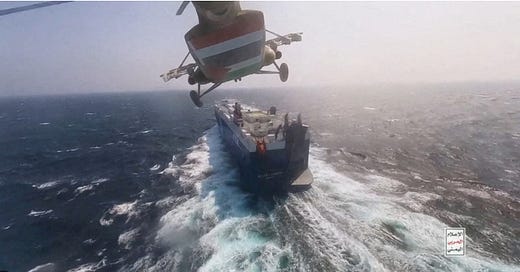



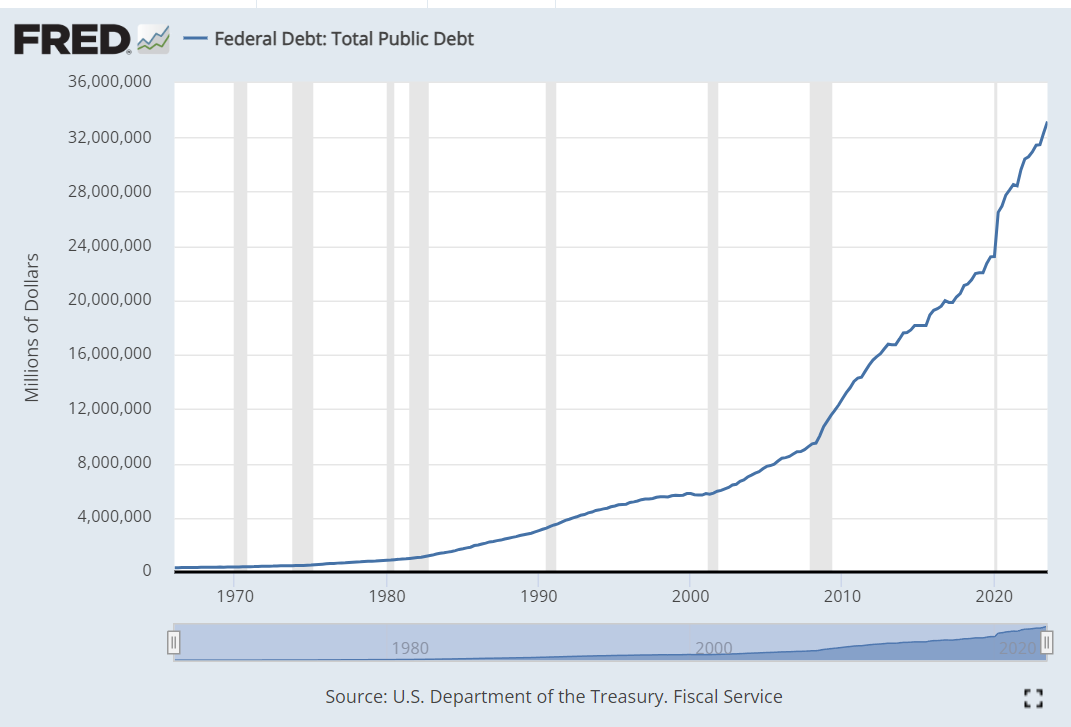
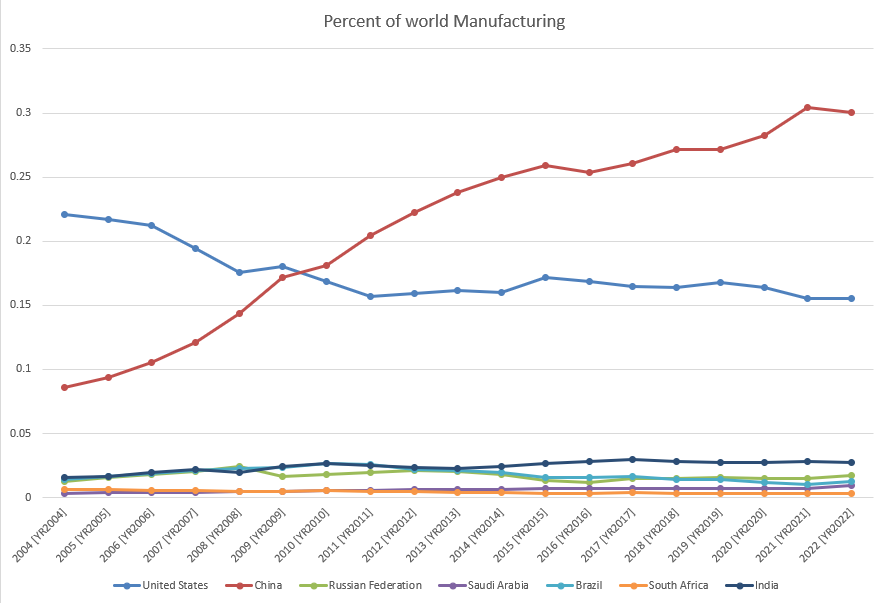


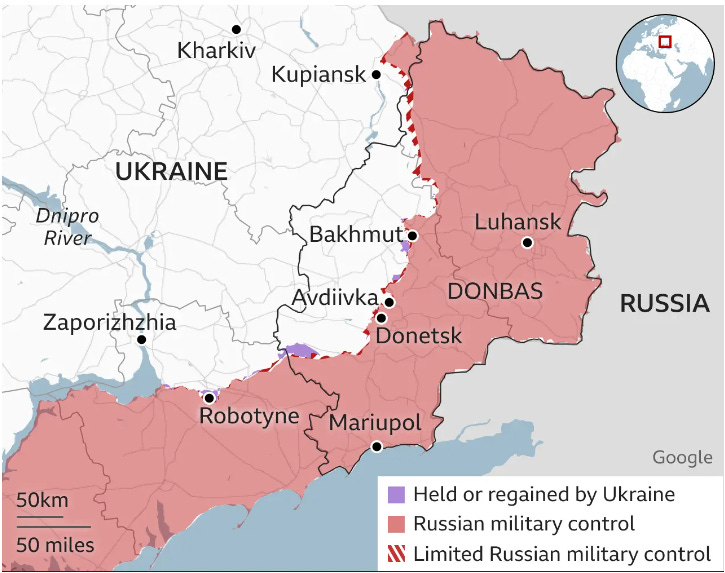

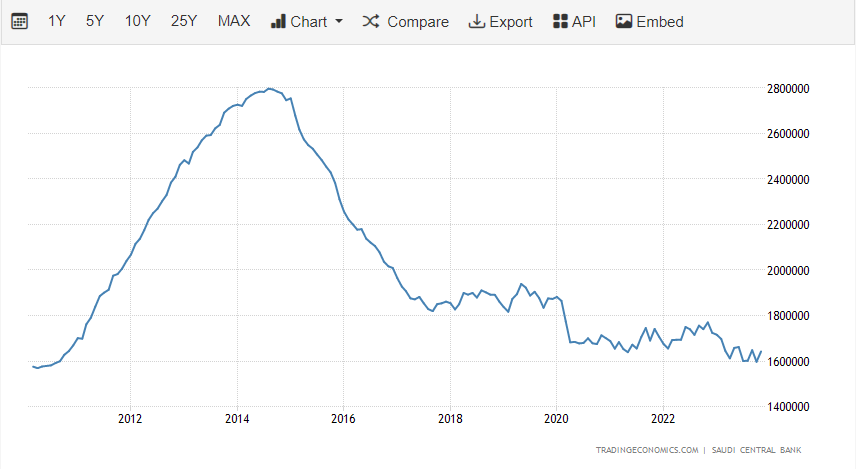
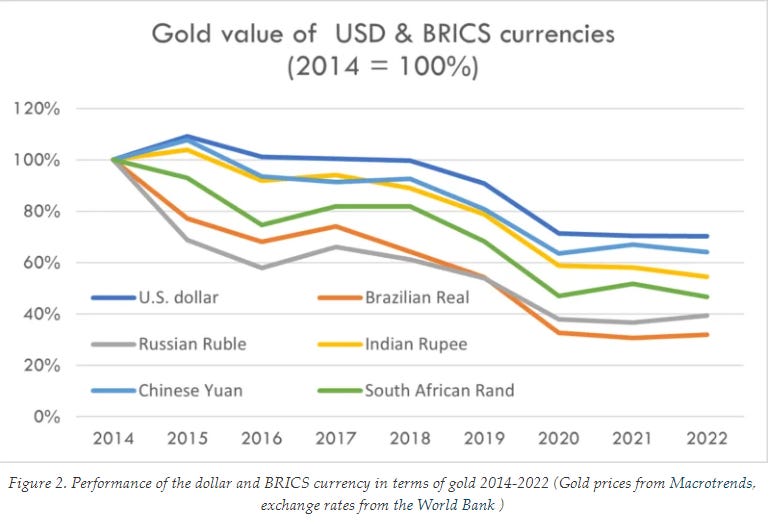
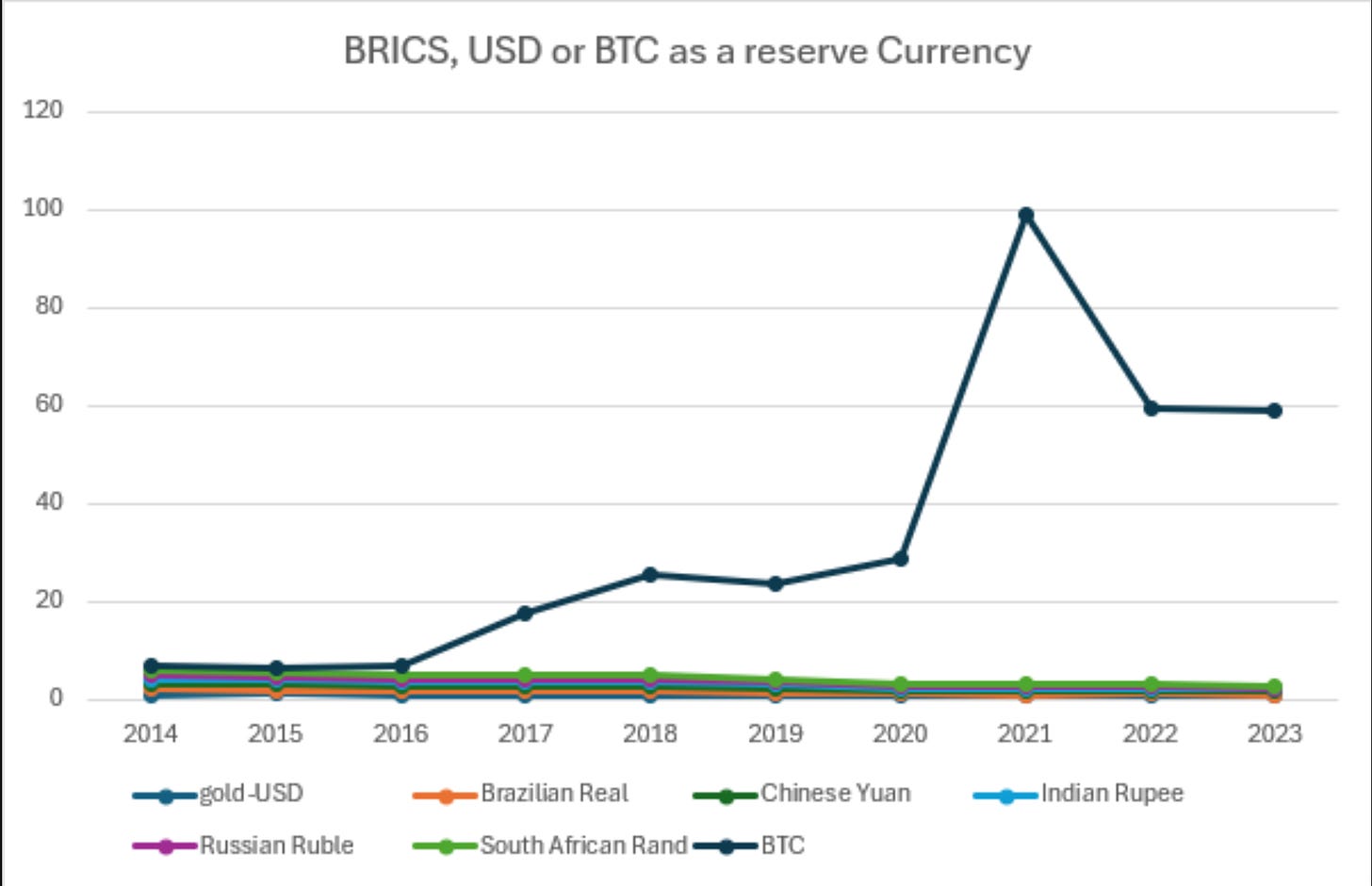

The empire is officially over the day a US Carrier gets sunk by a hypersonic missile/drone swarm. Imagine how big a shock that will be to the world order. Seems pretty likely at this point, maybe even within 5 years.
Gotta whitepill.
Now... America as world power...
We
Don’t
Need
It
We never did, given our matchless geography and natural resources.
Add nukes... our position in the Western Hemisphere and certainly our continent is unassailable- except perhaps as full nuclear war suicide mission.
Our largest market internal, our largest trading partners connected by land.
We have a collapsing DC government that long ago in time of Depression and world war and in an ad hoc manner exceeded our natural and its Constitutional Bounds. We are in a process of devolution out of DC, our peripheral Empire suffers as do we at home. This is ending, the Empire is ending. It’s painful.
... at this point, pathetic.
Our intrinsic strengths besides size , resources, position are above all we are in North America the eternal Federation from the Iroquois to the Internet and all arrangements in between. This is our natural and so far inescapable form. A federation- like the Internet - is extremely resilient, self healing. We have 85000 distinct governments, 20,000 at least law enforcement agencies, 54 state and territory ground and air national guard units (who answer to the governors of states), a resourceful and skilled, self organizing population - think Red Cross volunteers, volunteer fire departments, Cajun navy, Ground zero or any number of rescuers, and one heavily armed population. We’ll make it.
We are going to suffer as we devolve from DC’s grotesque over centralization and de-leverage our debts and Empire.
Wars are quite likely at home and abroad. But we’ll survive and get our country back.
As far as the world and the “Empire”... so long!